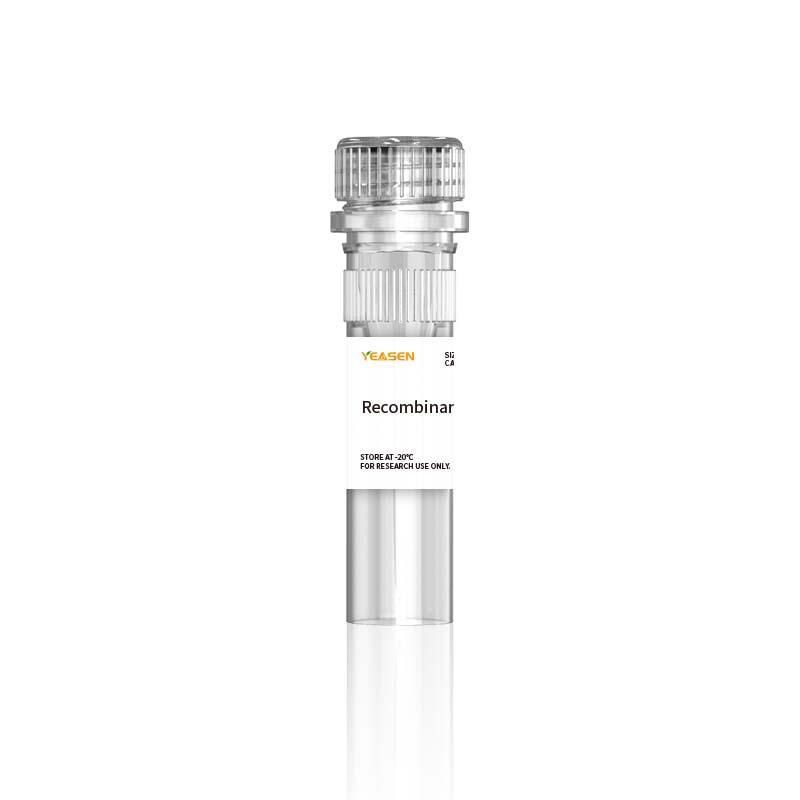描述
C-reactive protein (CRP) is a member of the pentraxin family of plasma proteins that are part of the lectin fold superfamily of calcium-dependent, carbohydrate-binding proteins. CRP is named for its ability to bind to the C-polysaccharide of Strep. Pneumoniae. CRP is characterized by cyclic pentameric structure that contains five identical protomers/subunits, each exhibiting a lectin fold composed of two antiparallel beta -sheets with a fattened jellyroll topology. The mouse CRP precursor is 225 amino acids (aa) in length and contains a signal peptide of 19 aa with a mature polypeptide of 206 aa. There is one intrachain disulfide bond and no N-linked glycosylation site(s). Although rat CRP is glycosylated at an N-linked site, human, mouse and rabbit CRP all appear to be non-glycosylated. In mouse, the protomers are assembled non-covalently to form the pentameter; in rat, two of the five protomers are covalently linked. In mouse, IL-6 has very little effect. Mouse CRP induction is due principally to IL-1, with another pentraxin, SAP, being IL-6 inducible. CRP exhibits calcium-dependent binding to ligands. Phosphocholine (PCh), a constituent of many bacterial and fungal cell walls, is a principal ligand of CRP. CRP will also bind to the cell membrane of injured necrotic and apoptotic cells. In this context, CRP acts as an opsonin, binding to Fc gamma RI and II, and serves as an antiinflammatory agent.
Specifications
|
Synonyms |
C-reactive protein; CRP; PTX1; MGC88244; pentraxin 1; PTX1MGC149895 |
|
Uniprot No. |
P14847 |
|
Source |
Recombinant Mouse C-Reactive Protein/CRP Protein is expressed from HEK293 Cells with His tag at the C-terminal. It contains His20-Ser225. |
|
Molecular Weight |
Approximately 24.2 kDa. Due to glycosylation, the protein migrates to 26-28 kDa based on Tris-Bis PAGE result. |
|
Purity |
> 95% as determined by SDS-PAGE and HPLC. |
|
Endotoxin |
< 1.0 EU per 1μg of the protein by the LAL method. |
|
Formulation |
Lyophilized from 0.22μm filtered solution in PBS (pH 7.4). Normally 5% trehalose is added as protectant before lyophilization. |
|
Reconstitution |
Centrifuge tubes before opening. Reconstituting to a concentration more than 100 μg/mL is recommended (usually we use 1 mg/mL solution for lyophilization). Dissolve the lyophilized protein in distilled water. |
Storage
Transported with ice packs. Store at -20℃ to -80℃, valid for one year.
After reconstitution, store unopened at -20 to -80°C for 3 to 6 months. After reconstitution, store at 2 to 8°C for 2 to 7 days.
It is recommended to store in aliquots and freeze for the first use to avoid repeated freezing and thawing.
Note
1. Avoid repeated freezing and thawing.
2. For your safety and health, please wear lab coat and disposable gloves when operating.
3. This product is for scientific research purposes only.
Product Data

付款和安全
您的付款信息已安全處理。我們無法存儲信用卡詳細信息,也無法訪問您的信用卡信息。
詢問
你也可能喜歡
常問問題
本產品僅用於研究目的,不用於人類或動物的治療或診斷用途。產品和內容受以下公司的專利、商標和版權保護:
某些應用程式可能需要額外的第三方智慧財產權。

